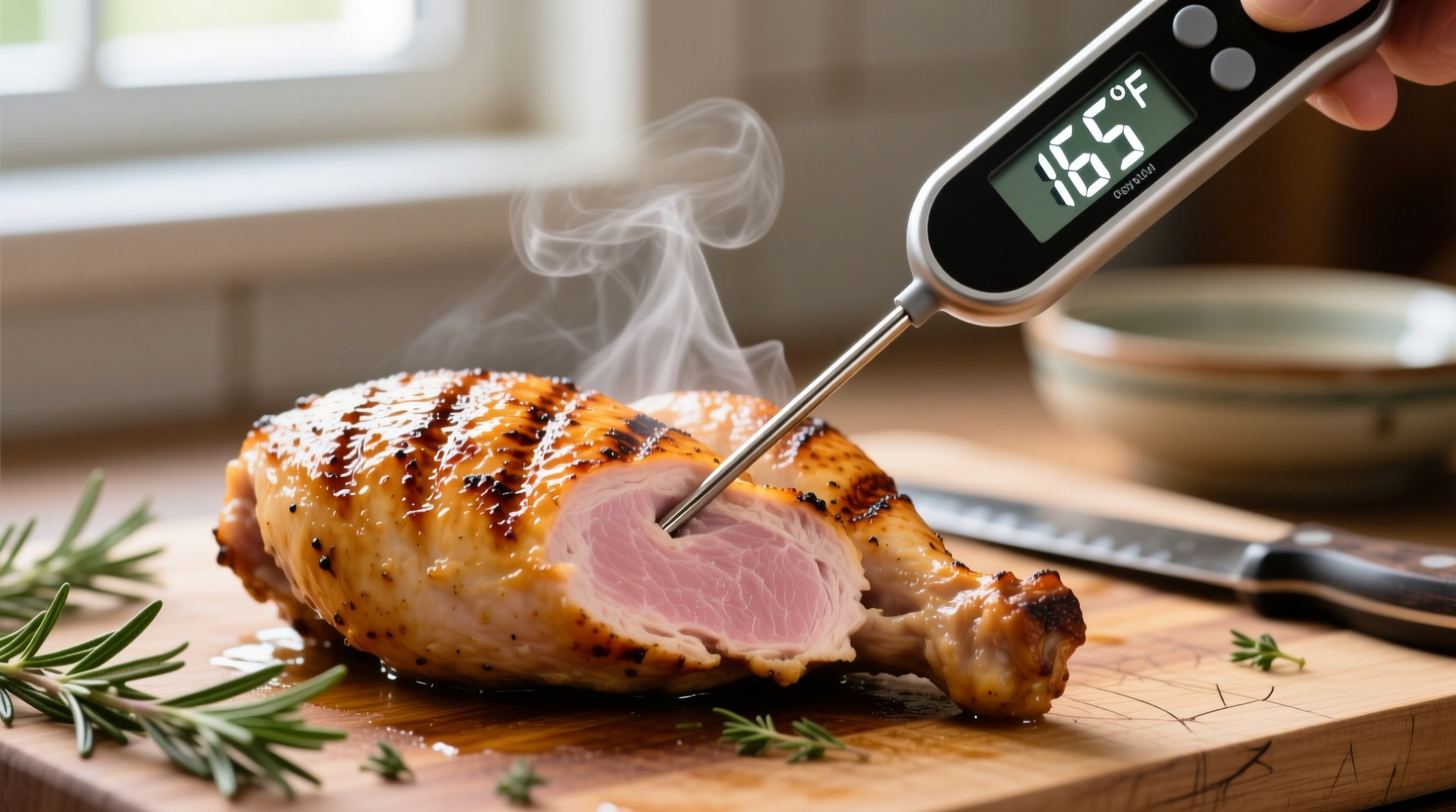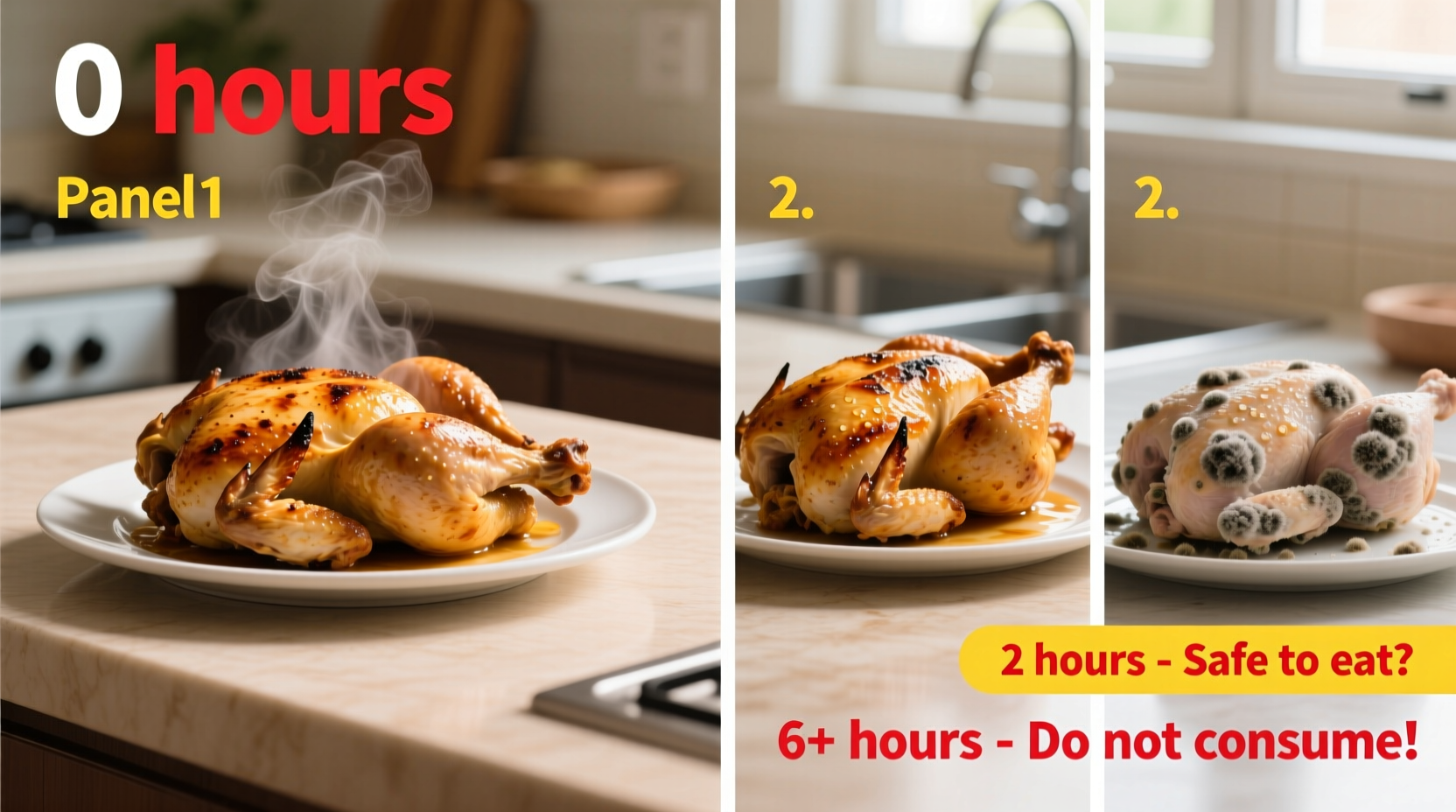USDA guidelines state cooked chicken must not remain at room temperature longer than 2 hours. When temperatures exceed 90°F (32°C), reduce this to just 1 hour to prevent dangerous bacterial growth.
Every year, millions suffer from foodborne illnesses caused by improper food handling. Cooked chicken left unattended could be your next health crisis. Understanding precise time limits isn't just convenient—it's essential for protecting your family from potentially severe food poisoning.
The Science Behind the 2-Hour Safety Window
When cooked chicken cools below 140°F (60°C), it enters the temperature danger zone (40°F-140°F / 4°C-60°C), where bacteria multiply rapidly. Pathogens like Salmonella and Staphylococcus aureus can double in number every 20 minutes under ideal conditions. The USDA's 2-hour rule isn't arbitrary—it's calculated to prevent bacterial counts from reaching dangerous levels before consumption.

Temperature Timeline: Bacterial Growth Explained
| Time Elapsed | Temperature Range | Bacterial Activity | Food Safety Status |
|---|---|---|---|
| 0-30 minutes | 140°F+ (60°C+) | Minimal growth | Safe |
| 30-60 minutes | 120°F-140°F (49°C-60°C) | Slow multiplication | Monitor closely |
| 1-2 hours | 70°F-120°F (21°C-49°C) | Rapid exponential growth | Approaching danger zone |
| 2+ hours | 40°F-140°F (4°C-60°C) | Explosive multiplication | Unsafe for consumption |
When the 2-Hour Rule Changes: Critical Context Factors
While the 2-hour standard applies to most situations, these conditions require stricter time limits:
- High ambient temperatures: At 90°F (32°C) or above, bacteria multiply twice as fast—reduce safety window to 1 hour
- Humidity levels: Moist environments accelerate bacterial growth, particularly problematic in summer months
- Cut or shredded chicken: Increased surface area allows faster contamination compared to whole pieces
- Sauces and marinades: Moist ingredients create ideal breeding grounds for pathogens
The FDA Food Code confirms these adjustments, noting that "time as a public health control" must account for environmental factors affecting bacterial proliferation rates (FDA Food Code 2022, Section 3-501.16).
How to Recognize Spoiled Cooked Chicken
Don't rely solely on time calculations—use your senses to verify safety:
- Smell test: Sour or ammonia-like odors indicate spoilage (fresh cooked chicken has mild, neutral aroma)
- Texture check: Slimy film or sticky surface means bacteria have multiplied significantly
- Visual inspection: Grayish color or visible mold growth requires immediate disposal
- Taste warning: Never taste questionable chicken—pathogens may be present without obvious flavor changes
Proper Storage Techniques for Maximum Safety
Follow these USDA-recommended practices for safe cooked chicken storage:
- Immediate cooling: Divide large portions into shallow containers (no deeper than 2 inches) to accelerate cooling
- Refrigeration timeline: Chill within the 2-hour window at 40°F (4°C) or below
- Storage duration: Consume refrigerated chicken within 3-4 days (USDA FoodSafety.gov)
- Freezing method: Wrap tightly in freezer paper or vacuum seal for up to 4 months storage
When in Doubt, Throw It Out: The Only Safe Approach
If you're uncertain whether cooked chicken has exceeded safe time limits, discard it immediately. The Centers for Disease Control estimates that Salmonella alone causes approximately 1.35 million infections annually in the United States. Symptoms like severe diarrhea, vomiting, and fever can develop within 6-48 hours of consuming contaminated chicken. No meal is worth risking hospitalization—when food safety questions arise, always choose disposal over consumption.











 浙公网安备
33010002000092号
浙公网安备
33010002000092号 浙B2-20120091-4
浙B2-20120091-4